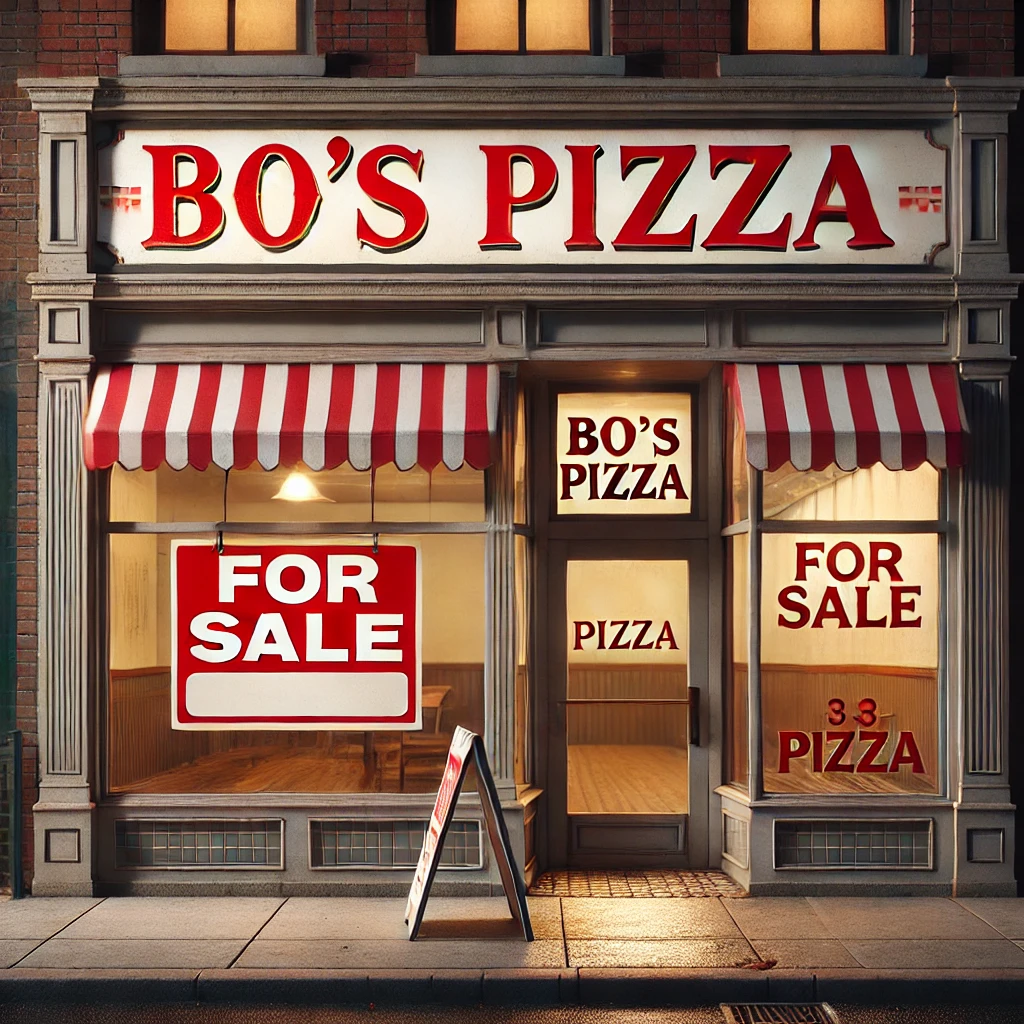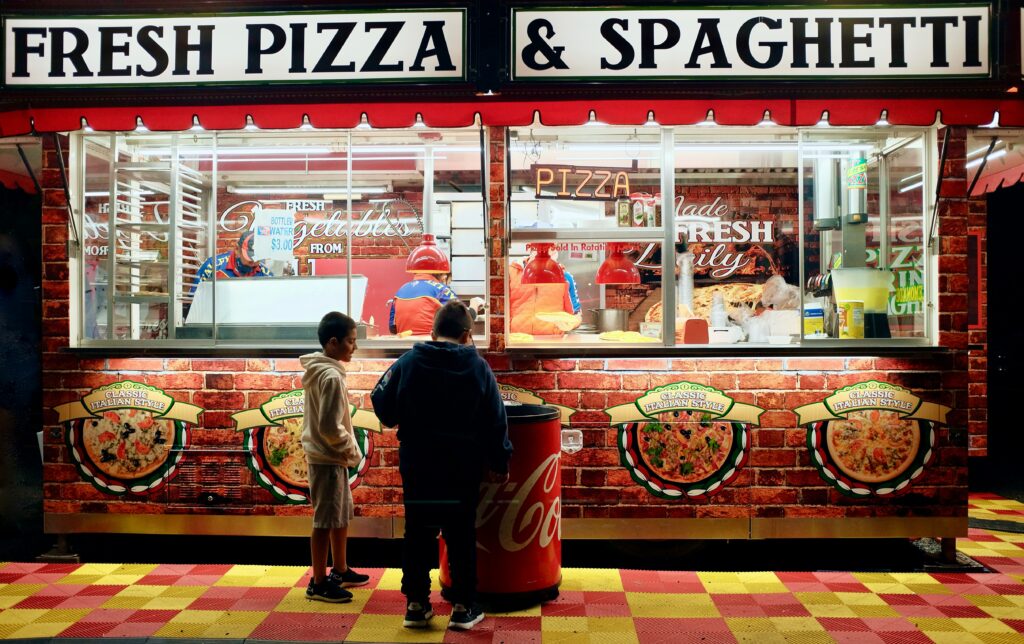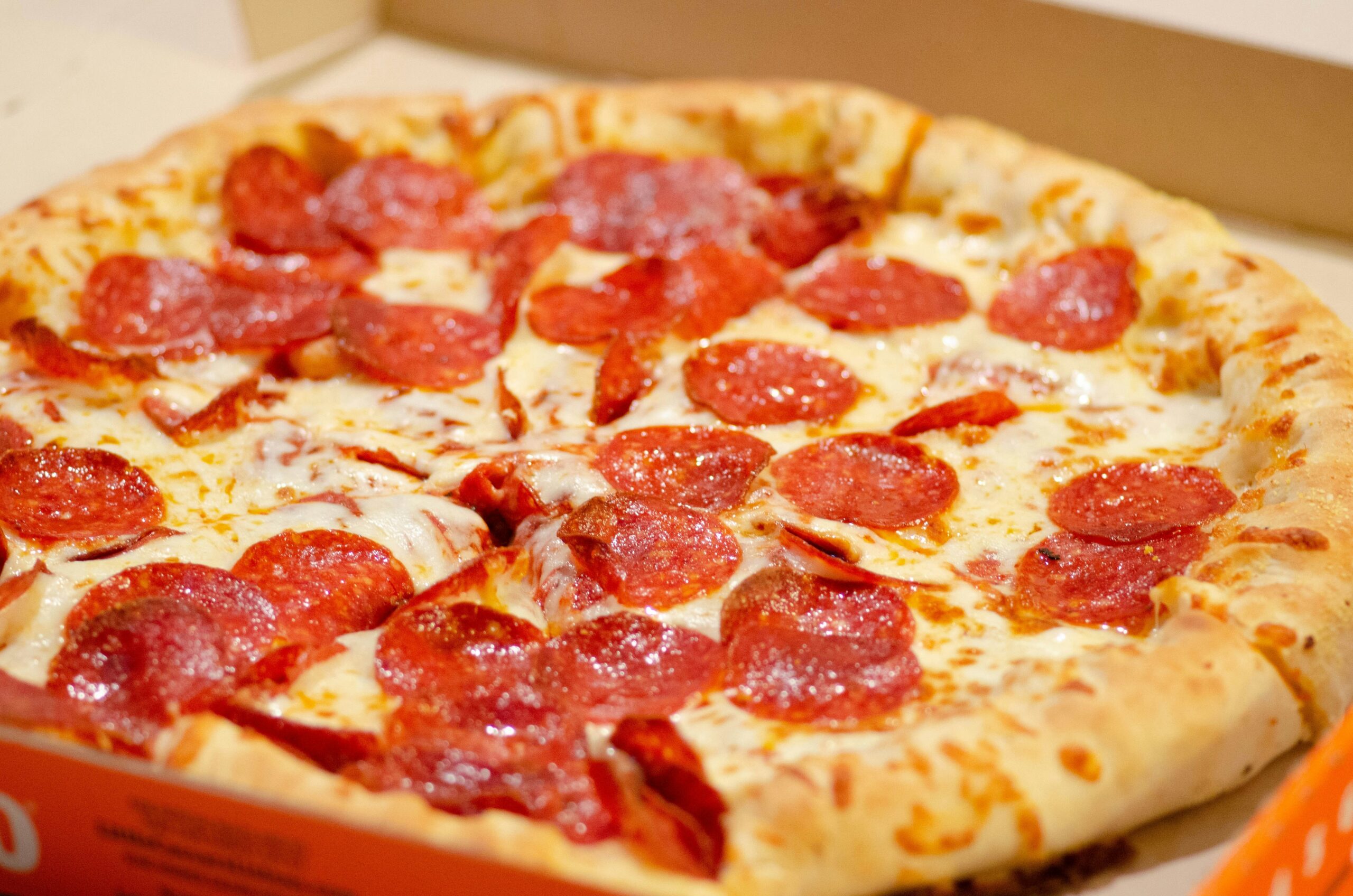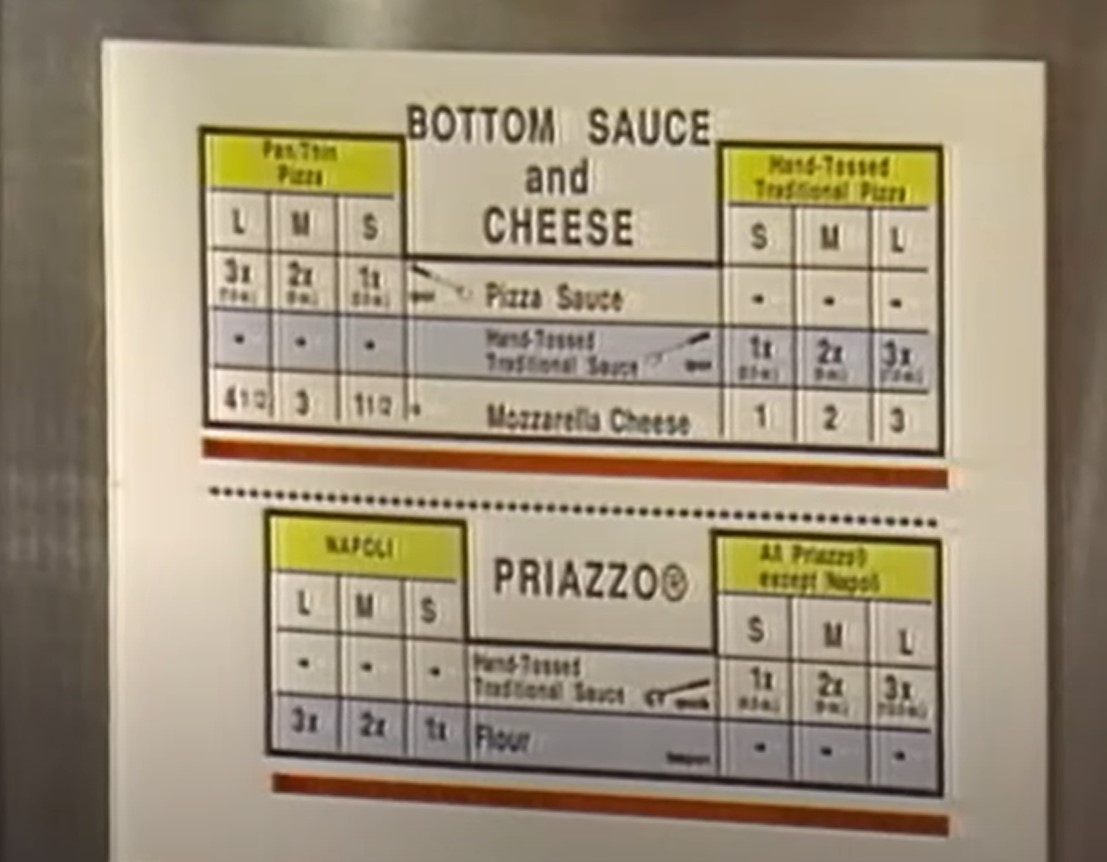The dream of owning a pizza shop can be exciting, but it comes with significant financial planning. From equipment and rent to staffing and daily operations, the costs quickly add up.
In this article, we’ll break down the essential startup expenses, ongoing operational costs, and the daily sales targets you’ll need to hit in order to break even in your first year. Whether you’re aiming for a small neighborhood pizzeria or a bustling delivery-based operation, understanding these numbers is key to ensuring your business stays profitable.
To open a pizza shop, you’ll need a mix of kitchen equipment, furniture, and supplies.
Here’s a breakdown of essential items:
1. Pizza-Making Equipment
- Pizza Oven: A high-quality commercial pizza oven (conveyor, deck, or wood-fired) depending on the style of pizza you serve.
- Dough Mixer: For preparing pizza dough in bulk.
- Dough Sheeter or Roller: To roll out dough evenly.
- Prep Tables: Stainless steel prep tables with cutting boards.
- Pizza Peels: Long-handled peels to slide pizzas into the oven.
- Dough Proofing Boxes: For storing dough during the rising process.
2. Refrigeration and Storage
- Commercial Refrigerators and Freezers: For storing ingredients like cheese, meats, and sauces.
- Ingredient Bins: Airtight storage containers for flour, yeast, and other dry ingredients.
- Walk-in Cooler: If you plan to store large quantities of perishable goods.
3. Cooking and Prep Tools
- Cutters: Pizza cutters, dough cutters, and knives.
- Measuring Tools: Scales, measuring cups, and spoons.
- Mixing Bowls: For dough and ingredients.
- Sauce Pans: For making pizza sauce.
- Food Processors: For slicing and dicing toppings.
4. Serving Equipment
- Pizza Pans or Screens: To bake pizzas on.
- Pizza Boxes: For takeout and delivery orders.
- Delivery Bags: Insulated bags to keep pizzas warm for delivery.
5. Front-of-House Equipment
- POS System: For managing orders and payments. You might also integrate pizza online ordering if you offer delivery.
- Dining Tables and Chairs: If you offer dine-in services.
- Signage and Menu Boards: Digital or printed menus for customers.
- Utensils and Plates: For dine-in customers.
- Drink Dispensers: If you serve beverages.
6. Cleaning and Safety
- Sinks: A three-compartment sink for washing dishes and a separate handwashing sink.
- Cleaning Supplies: Mops, brooms, detergent, and sanitizers.
- Fire Suppression System: Especially for commercial ovens and fryers.
- First Aid Kit: For staff safety.
7. Miscellaneous
- Delivery Vehicles: If you offer delivery, consider branded cars or bikes with insulated storage.
- Security System: Cameras and alarms for safety and monitoring.
This list can be adjusted based on the size and scale of your pizza shop (dine-in, delivery, or both).

The cost of setting up a pizza shop can vary widely depending on factors such as the size of the business, location, and the quality of equipment. Here’s an estimate of the costs for each major category of equipment:
1. Pizza-Making Equipment
- Pizza Oven: $5,000 – $20,000 depending on the type (conveyor, deck, or wood-fired).
- Dough Mixer: $1,000 – $3,000.
- Dough Sheeter/Roller: $1,500 – $4,000.
- Prep Tables: $500 – $2,000.
- Pizza Peels: $20 – $100 each (you’ll likely need a few).
- Dough Proofing Boxes: $30 – $50 each.
Total for Pizza-Making Equipment: $8,000 – $29,000.
2. Refrigeration and Storage
- Commercial Refrigerators and Freezers: $2,000 – $5,000 each.
- Ingredient Bins: $100 – $500 for multiple bins.
- Walk-in Cooler: $5,000 – $10,000.
Total for Refrigeration: $7,100 – $15,500.
3. Cooking and Prep Tools
- Pizza Cutters: $10 – $50 each.
- Measuring Tools: $50 – $200.
- Mixing Bowls: $50 – $200.
- Sauce Pans: $100 – $500.
- Food Processors: $300 – $1,500.
Total for Cooking and Prep Tools: $500 – $2,450.
4. Serving Equipment
- Pizza Pans or Screens: $5 – $20 each (need several).
- Pizza Boxes: $0.20 – $1 per box, bulk orders will lower cost.
- Delivery Bags: $20 – $200 each.
Total for Serving Equipment: $500 – $2,500.
5. Front-of-House Equipment
- POS System: $1,000 – $5,000 (hardware + software).
- Tables and Chairs: $100 – $500 per set, depending on quality.
- Signage/Menu Boards: $500 – $2,000.
- Utensils and Plates: $200 – $1,000.
- Drink Dispensers: $1,000 – $3,000 (for fountain drinks).
Total for Front-of-House Equipment: $2,800 – $11,500.
6. Cleaning and Safety
- Sinks: $500 – $2,000 each.
- Cleaning Supplies: $100 – $500.
- Fire Suppression System: $1,000 – $5,000.
- First Aid Kit: $50 – $200.
Total for Cleaning and Safety: $1,650 – $7,700.
7. Miscellaneous
- Delivery Vehicles: $10,000 – $25,000 per vehicle (optional).
- Security System: $500 – $3,000.
Total for Miscellaneous: $10,500 – $28,000.
Total Cost Estimate:
- Low End: $30,050
- High End: $96,650
These costs can vary based on factors like equipment brand, size of the shop, and whether you buy new or used. Additionally, don’t forget to budget for other operational costs such as rent, licenses, permits, staff wages, and ingredients.
What can be skipped
- Dough Sheeter/Roller
- High-end ovens
- Walk-in cooler
- Custom pizza boxes
- Delivery bags (if not delivering in-house)
- Extra pizza pans/screens
- Fancy tables, chairs, or digital menu boards
- Drink dispensers
- Fire suppression system (if not required)
- Delivery vehicles
- High-end security system
By starting lean, you can lower your upfront costs and reinvest profits into expanding your equipment and offerings in the future.

Photo by Adam Gonzales on Unsplash
Break-Even Calculation: How Many Pizzas to Sell Per Day
Let’s assume you price each pizza at $15 and your food cost per pizza (ingredients) is around 30% of that, or $4.50.
Step 1: Calculate Variable Costs per Pizza
- Ingredient Cost (30% of price): $4.50
- Other Costs (labor, rent, utilities, marketing): Estimate 70% of the pizza price, which is around $10.50.
Thus, each pizza generates $15 – $10.50 = $4.50 of gross profit.
Step 2: Annual Costs to Cover
Assuming total annual costs are between $200,100 – $667,250, the number of pizzas you need to sell per year is:
- Low-End Estimate: $200,100 ÷ $4.50 = 44,467 pizzas/year
- High-End Estimate: $667,250 ÷ $4.50 = 148,278 pizzas/year
Step 3: Calculate Daily Pizza Sales
To cover these annual costs, the daily pizza sales required (assuming you’re open 365 days a year) would be:
- Low-End: 44,467 ÷ 365 = 122 pizzas/day
- High-End: 148,278 ÷ 365 = 406 pizzas/day
Reasons pizzerias closing doors
The restaurant industry can be tough, and pizzerias are no exception. Here are the top 10 reasons pizzerias often close their doors:
1. Poor Location
A pizzeria in an area with low foot traffic, insufficient parking, or poor visibility can struggle to attract enough customers, leading to low sales and eventual closure.
2. High Operating Costs
Rising costs for ingredients, rent, utilities, and labor can eat into profits. If the revenue doesn’t cover these costs consistently, it can force the business to shut down.
3. Weak Marketing and Branding
Many pizzerias fail to differentiate themselves from competitors or don’t invest enough in marketing. Without strong branding or promotions, it’s hard to build a loyal customer base.
4. Inconsistent Food Quality
Inconsistent pizza quality or poor service can drive customers away. Word-of-mouth and online reviews play a big role in the restaurant business, so quality control is crucial.
5. Inadequate Financial Management
Poor cash flow management, underestimating costs, or misallocating resources can lead to financial strain. Many new owners struggle with budgeting and keeping operational costs in check.
6. Failure to Adapt to Trends
Pizzerias that don’t keep up with changing customer preferences, such as offering gluten-free, vegan, or health-conscious options, can lose market share to competitors.
7. Overdependence on Delivery Apps
While delivery services like Uber Eats and DoorDash can increase orders, the high commissions (15% – 30%) cut into profit margins. Over-reliance on third-party apps without maintaining in-house sales can be unsustainable.
8. Bad Location Lease Agreements
Getting locked into long-term, expensive lease agreements can be disastrous if the business underperforms or if operating costs rise. Negotiating more flexible terms is critical.
9. Poor Customer Service
Slow service, unprofessional staff, or bad customer interactions can lead to negative reviews and a loss of repeat customers. Customer service is a key part of any restaurant’s success.
10. Lack of Innovation
Pizzerias that stick to outdated business models or menus may fail to stand out. Innovation in pizza offerings, service methods (like mobile apps), or atmosphere can keep customers engaged and coming back.
Bottom line
In the United States, about 1,500 to 2,000 new pizzerias open annually. However, this is in the context of a highly competitive and sometimes volatile market, where rising costs, labor shortages, and fluctuating demand create challenges for new entrants. The pizza industry is continuously growing, with expectations for sustained expansion, especially driven by independent pizzerias, which make up a significant portion of the market. Still, consolidation and increased competition among large chains also impact the industry’s dynamics
Yes, starting a pizzeria can be quite risky. The almost equal numbers of openings and closures highlight the intense competition and challenges in the market. Factors like high operating costs, changing consumer preferences, and the need for effective marketing and quality control can make it difficult for new pizzerias to succeed. Aspiring owners must conduct thorough market research, manage finances carefully, and adapt to trends to improve their chances of success.




